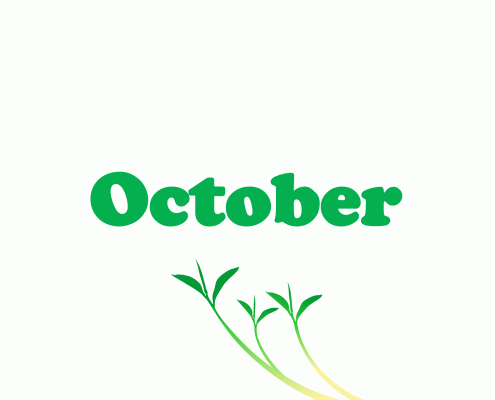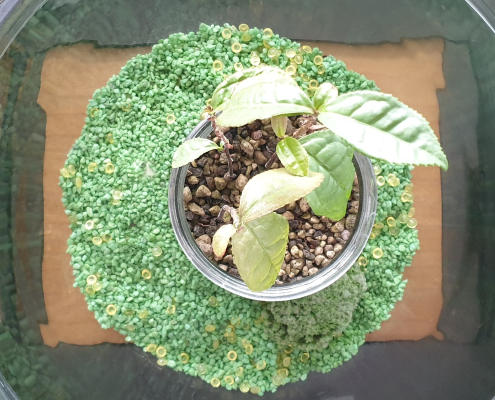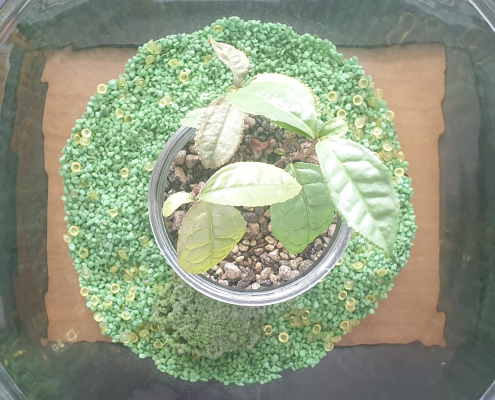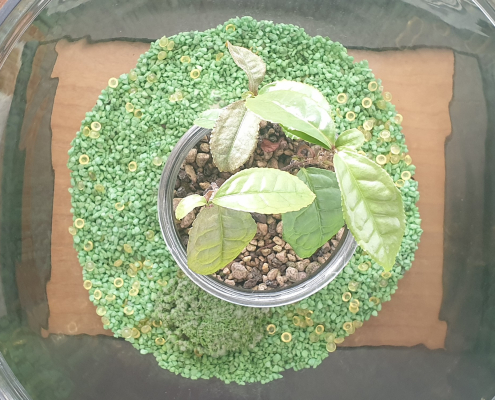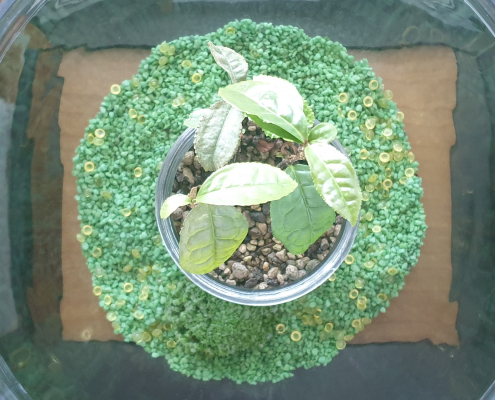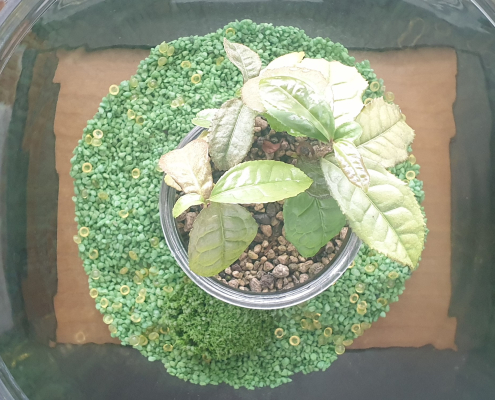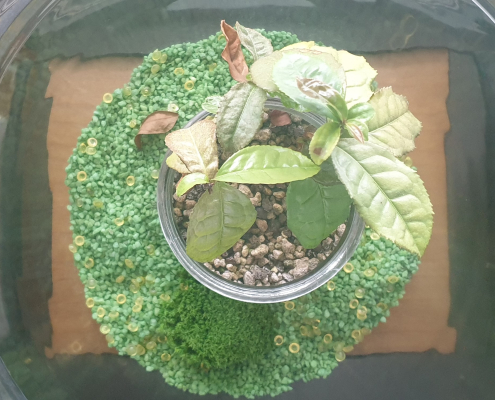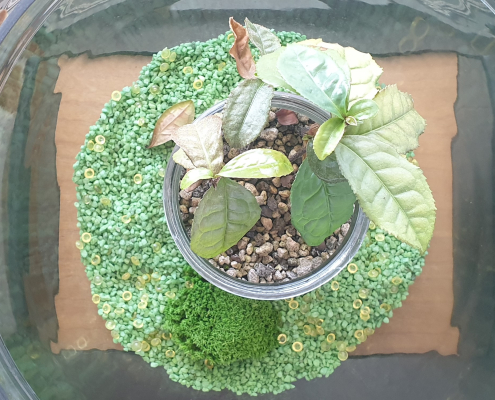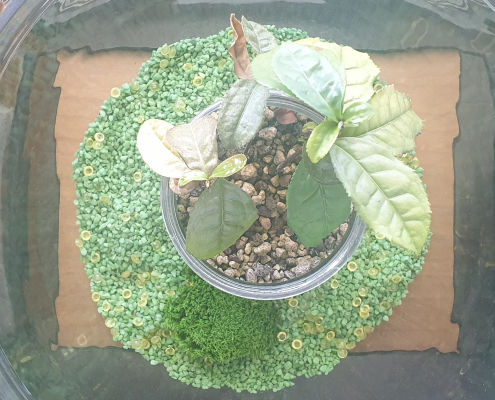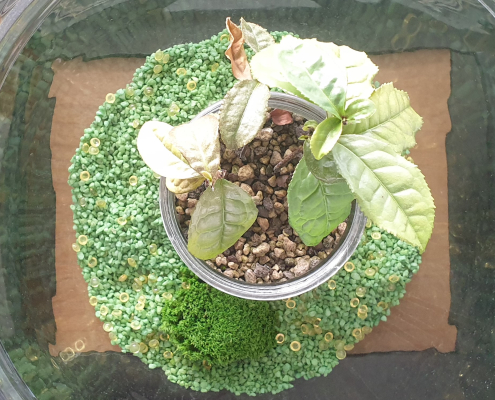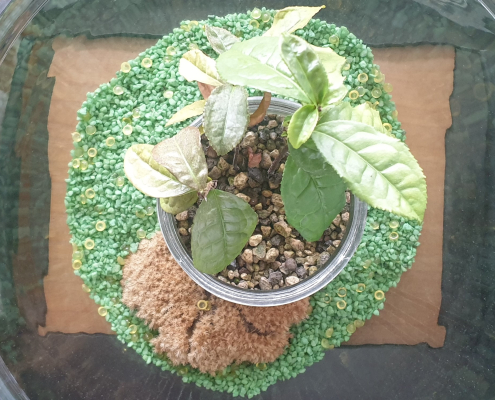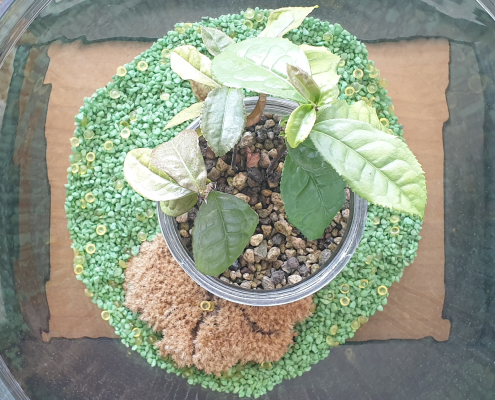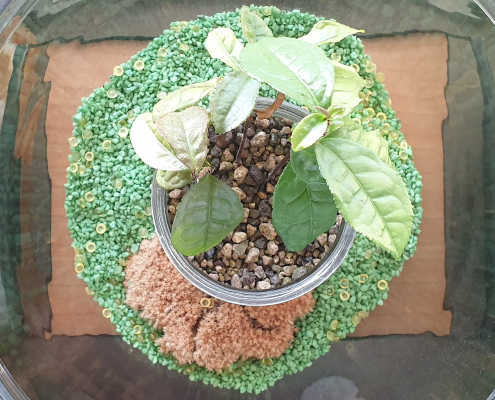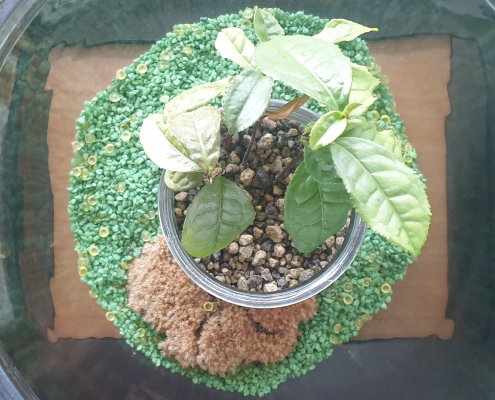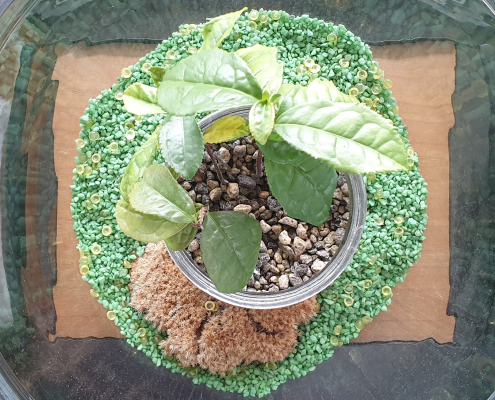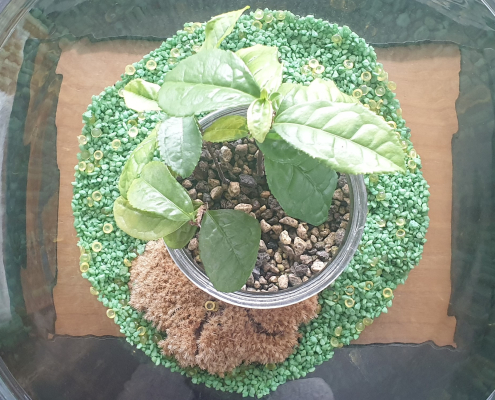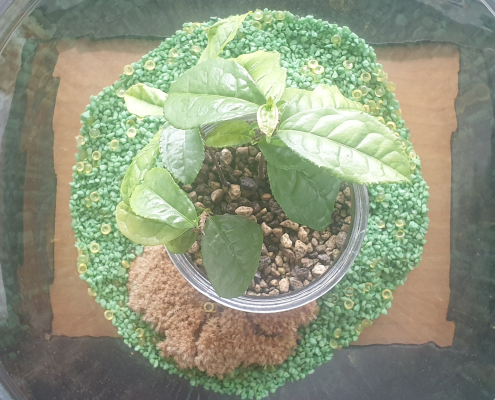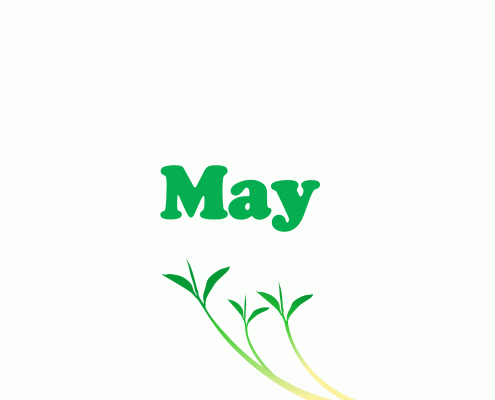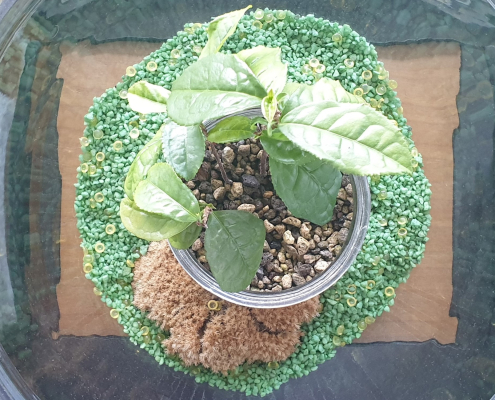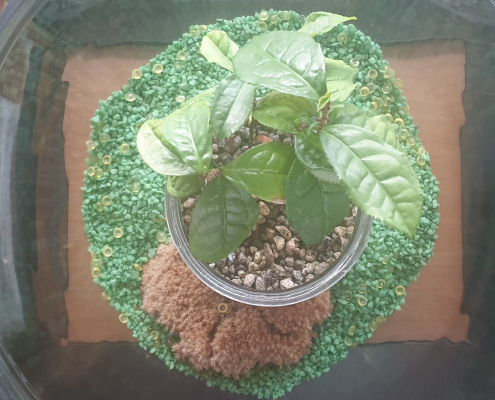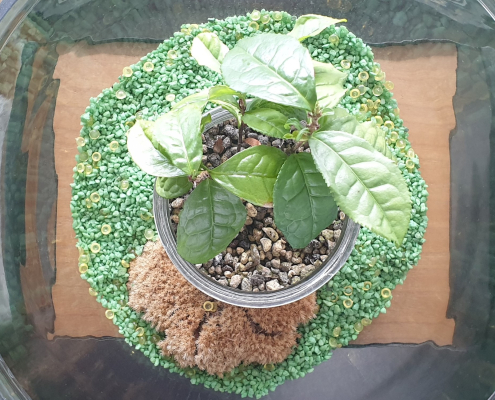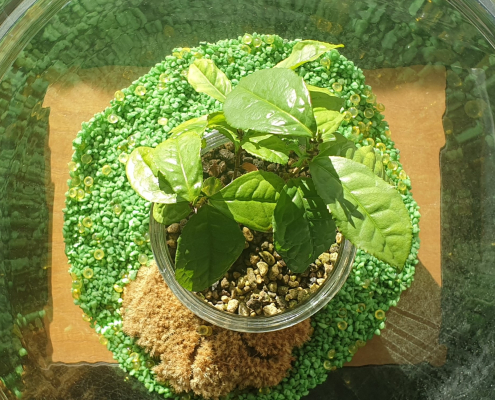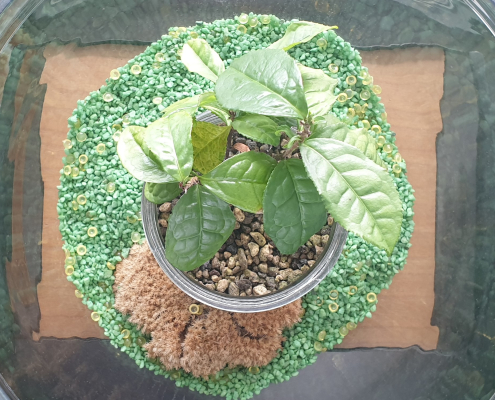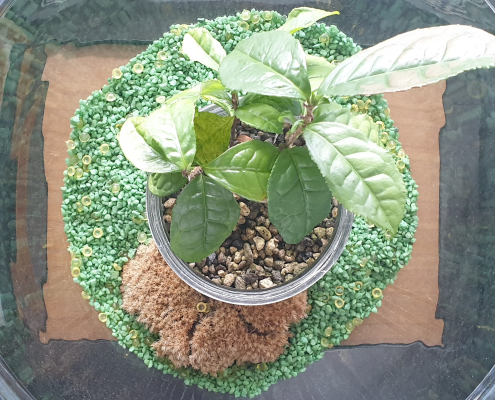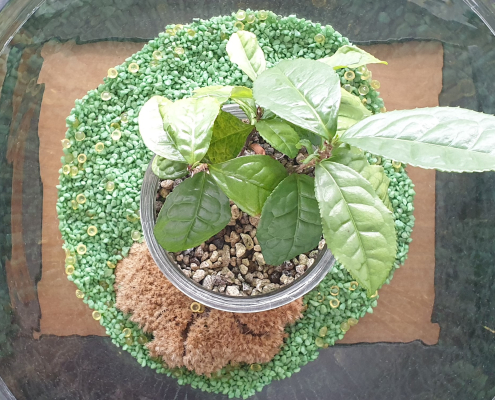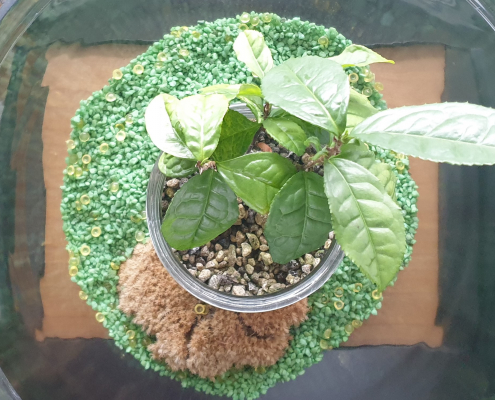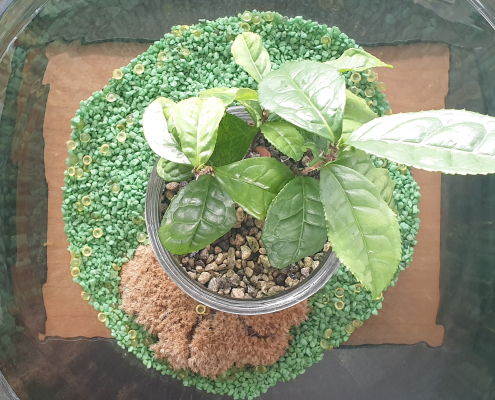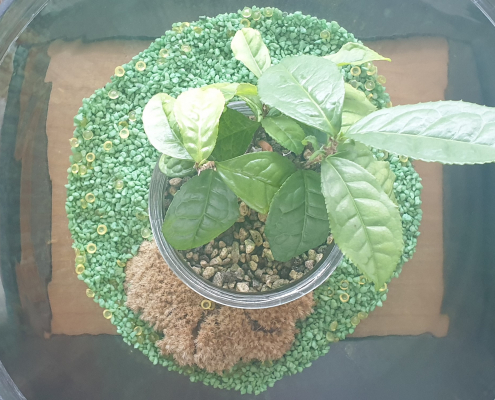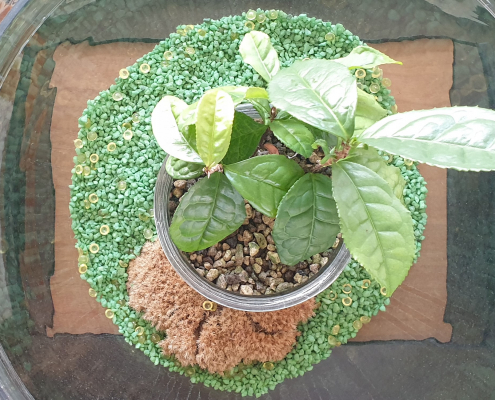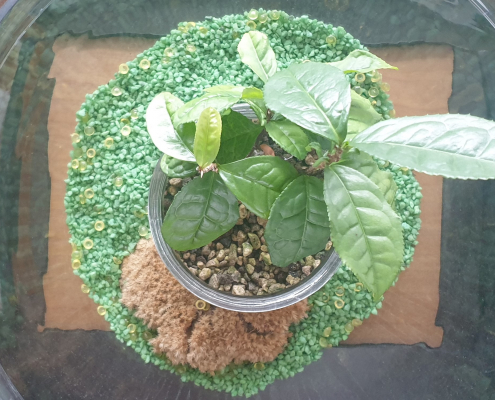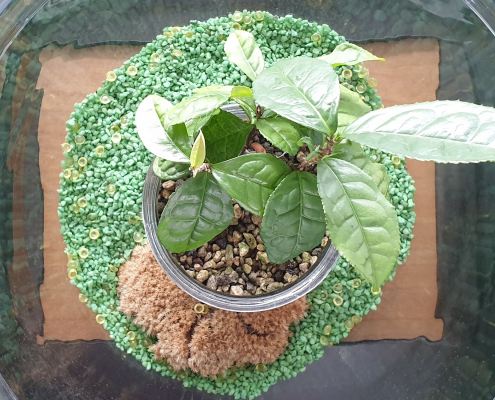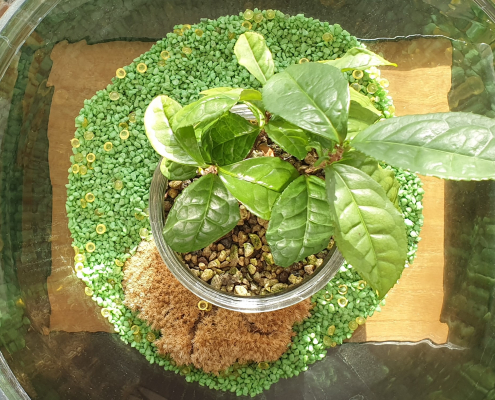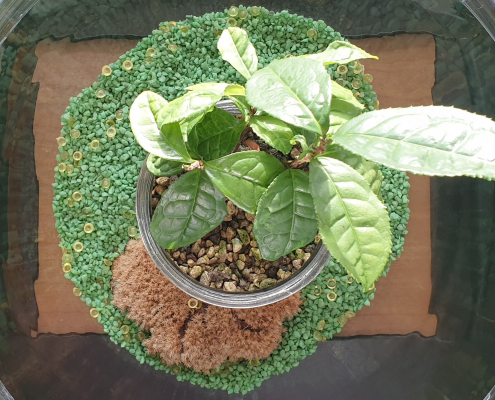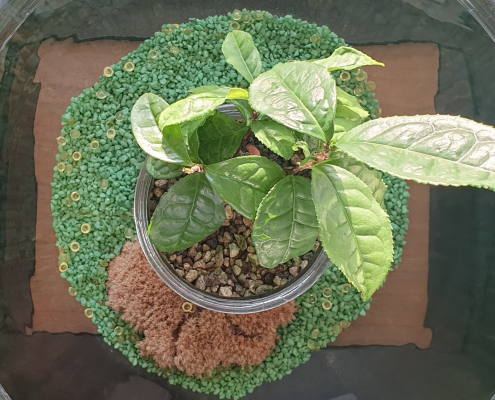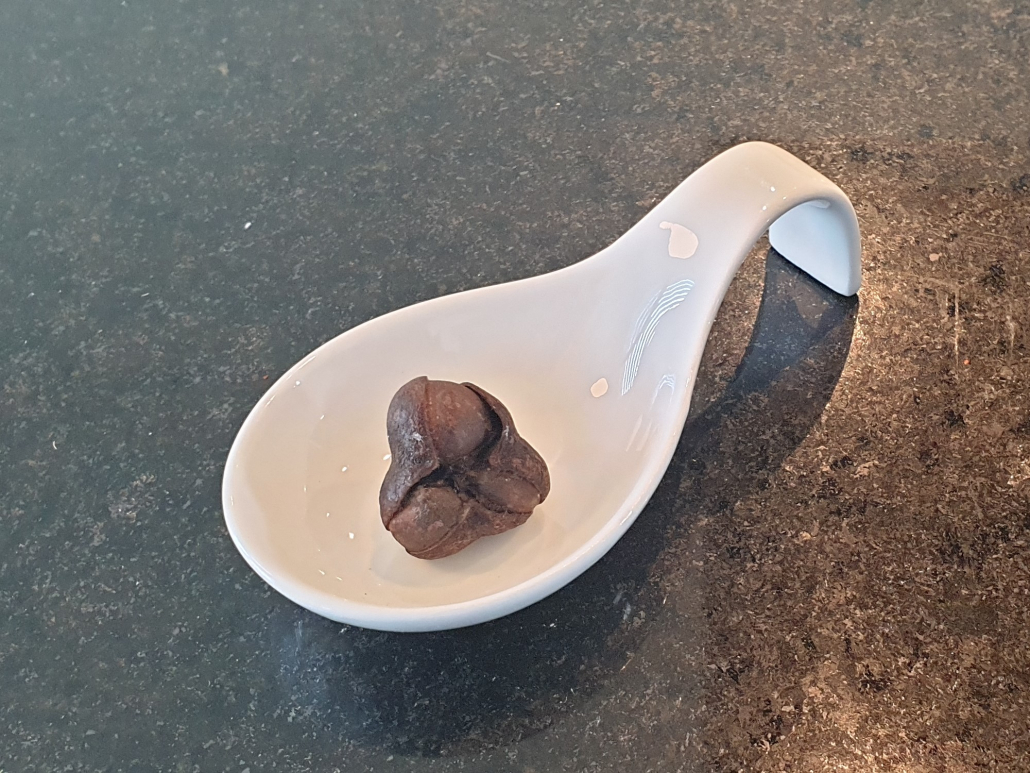Grow Your Own – Or Scroll Down for the Pictures
2021-2022-2023
There are two ways for tea enthusiasts (and farmers) to grow their own tea:
-
-
vegetative propagation
-
propagation through tea seeds
-
There is just one catch: It’s wrought with a whole batch of unexpected difficulties ;-)
Camellia Sinensis is an evergreen, tropical plant. It grows best in warm, humid, tropical climate in a band between 33°S and 43°N. (This explains why the English tried in vain and had to employ other countries, especially India, to produce tea for them). If you are familiar with CS varietals, CS Sinensis is said to be winter hardy, but CS Assamica is definitely not.
CS is extremely partial to cool nights, misty mornings and a good dose of sunlight throughout a warm day.
Below, you will find pictures of a Camellia Sinensis plant I have grown from seed. The seeds were planted in late 2020, and the first shoot broke through the surface at the end of December 2020.
The great number of pictures, which originally were all presented on the same page, appeared to immensely slow the download of the Grow Your Own page for visitors. Thus, for 2023, I have decided to make separate pages for each year and to maybe take a picture only once a week, i.e. about 4 per month to keep the download time to a reasonable minimum:
Vegetative Propagation:
Vegetative propagation is easier for the farmer. Put (really) simply, you cut off a young branch and plant it in the same soil. The branch will produce roots and grow into a bush with the same characteristics as its original plant. In other words, the result is a clone, and the farmer is happy because he can clone a single plant into a lot of bushes that all produce the same kind and quality of tea.
Propagation Through Seeds:
Camellia Sinensis produces beautiful flowers, which, if fertilised, in turn produce seeds in groups of three. These seeds can be planted into soil, but like in the human / animal kingdom, the offspring will be a new ‘product’ with new characteristics. Of course, tea plants produce tea plants (and they’d be equally surprised if a tea seed were to suddenly turn into a banana tree), but the new plants produced this way are not going to be clonal copies. (Cf. Cultivars here in Tea Talk). This is fine if you want to produce new tea (The Tea Research Foundation of Kenya, for example, has been working for about three decades on a tea plant that produces more than average anti-oxidants. They have developed a variety that is now called TRFK 306 and dubbed it purple tea. Unlike White, Green, Yellow, Blue, Black, and Post-Fermented Tea [Cf Tea, Tea, and Tea for classification], TRFK 306 is not a new category but a brand new CS varietal with some purplish tea leaves). Growing from seeds is also fun if you want to grow CS at home.
There are plenty of guides on the internet that tell you how to grow (and process !?) tea at home. Most of these websites contain mistakes in parts I can verify, and so it is unclear whether their methods to grow from seeds will work. (Be warned: Many claim that the seeds will grow into a bush, or grow to a maximum height of 200cm. If growth can be induced in your location and the plant is left unattended, each seed will try to grow into a proper tree ! We are just not used to seeing tea trees because on tea farms they are constantly pruned back to a comfortable service height called ‘plucking table’. Given the right climate and season, tea farmers in tropical climates can expect to pluck leaves every 10-14 days and will still have to do the occasional spot of pruning so that the tea bush does not grow out of shape. In Darjeeling especially, each plucking round is called ‘flush’).
Other Guides:
◊ Planting & Plucking Camellia Sinensis (by UK Tea & Infusions Association; in the top right-hand corner of their homepage, there is a ‘clock’ that counts the number of cups of tea drunk every day)
◊ How to Grow Tea (by LovetheGarden.com)
◊ Grow and Harvest Tea at Home (by The Spruce Eats)
What Worked for Me: Seeds
There are numerous reports of people buying seeds online that fail to germinate. Needless to say that I tried and failed, too. In fact, there are even websites dedicated to dissuading you from buying tea seeds online.
What has worked extremely well, however, are seeds picked up directly from the fields. (Note that it may be illegal to import tea seeds if you pick them up from a tea field abroad).
What Worked for Me: Germination
Again, I have followed various (and widely differing) instructions, from putting the seeds into the fridge for 2 weeks to submersing them in water for 24h (Some advise that only the seeds that sink be used) to shaking them to check which ones contained nuts. Whatever I tried, nothing happened in the pot afterwards, and there was no indication as to what had gone wrong.
Accidentally, I found out that the most reliable route to germination is to put the seeds (untreated, uncracked, unshaken) into a pot filled with Luwasa Indoor-Outdoor Longtime-Substrat (This is probably the spelling for the Swiss market so that it feels like we are buying something with an international touch but we still kind of understand what it is. Link to Luwasa Switzerland here), place them a few centimeters below the surface and wait. It could not have been easier. What is even more striking is that a phenomenal percentage of fresh-from-the-field tea seeds successfully start to germinate with this simple method. (Sadly, this is not where the problems end).
What Worked for Me: Ad-hoc Glass House
It is said that Camellia Sinensis requires a setting with an average temperature of at least 22°. In all fairness, it is a tropical plant. Mist is a problem at home, too, and so I created a simple glass house. In fact, what I am using in the pictures above is a large glass pot covered with cling film. It stands behind a window where the sun shines in for a few minutes every day. This brings up the interior temperature in my glass house, some water starts to evaporate from the little pot, and thus a humid interior is obtained underneath the cling film.
What Worked for Me: Waiting and Letting It Grow
It takes about 5-8 weeks for the seedlings to make their appearance. The shell almost always breaks into two halves, a root starts to appear and dig its way downwards while the seedling head will strive upwards. It is fascinating to see, and with enough tea you could almost watch your plants grow. In fact, the above series of pictures shows the growth period from the beginning of January (highly obliging plants, I must admit).
The initial development seemed to be much faster, and nothing much appears to have happened in February. However, the stalks browned and became harder. Maybe the plant used the time to build more solid, wooden stems.
In March, I missed the development of a new shoot. Shortly after repositioning the pot in a bigger glass house, the first April bud developed, and by mid-April it had already transformed into two leaves (one so-called fish leave of just a few millimeters’ size and a proper leave) with a new bud.
In August growth again seemed to stall, and I was already wondering whether it was worth it to take a picture every day, when all of a sudden a new shoot rapidly started to develop into a beautiful leave.
The tea plant grows tap roots (Cf. How deep are the roots of an organic tea plant) and this is where I made a serious mistake last time: Thinking that maybe the plant had stalled growth because it had noticed it was sitting in a shallow container, I replanted my seedlings and gave them fresh air to breathe together with sunlight outside. Sadly, they all died within a day or two. My local gardener advised me not to put them into a new environment too early, and so this time, even though I know they are building tap roots, I’ll let them mature a little longer.
The Plant’s Further Needs
Once more, this is not where the problems end. At some point, your plant will be strong enough to be planted into a proper container. Like its 250 flowering Camellia sisters (most of which cannot be used to produce tea), Camellia Sinensis belongs to the Theaceae family and thus needs slightly acidic but well-draining soil. You can use the same soil as you would for camellias (and magnolias, I think), but well-draining soil here means that almost all the water you pour in at the top, comes out at the bottom of your pot, which is quite a hassle. Furthermore, it needs to be watered on a daily basis. Watching the seeds turn into seedlings in the glass house was the easy part. Now follows the hard work. In addition to this, it will take 3-5 years for the plant to grow enough so that you can start producing tea. Also note that 500g of wet tea leaves will yield about 100g of dry tea leaves to put into your cup. (And now you will understand why I have a laughing fit every time I discover a website that makes you think you can easily produce your own tea at home).

